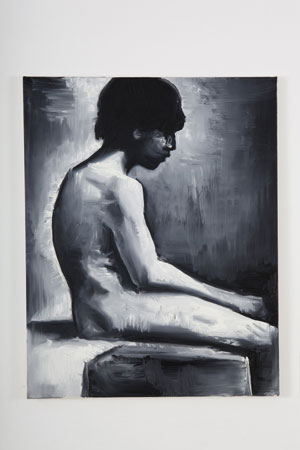Sansnal’s approach is unpredictable, and his methods range from graphic reduction and a pointedly two-dimensional, illustration-oriented style to seemingly autonomous gestures with brush and paint. Yet for all the subtlety of his seemingly uniform fields of color and despite the painter’s virtuoso or casual outbursts, his is not in any sense a ‘studied’ approach to painting. On the contrary, his painting always has something about it of what might be described as serendipity, which sometimes (and deliberately) seems to border on the accidental and the arbitrary. Sasnal’s painting may content itself with the sober objectivity of a black line drawing, or it may just easily array itself in the rich attire of photographic realism; it may set its sights on an amateurish Romanticism or endorse a kind of dry surrealism; it may incorporate careless mistake or even provoke them; it may take on an ornamental life of its own in an effort to replace what is all too familiar; it may set about destroying itself precisely as a way of achieving its goals.
… his approach, with its constant attention to the individual detail, the individual moment, is not to be confused with that simple-minded pleasure in the rapid stream of images that listens for their rhythm and considers it content enough. On the contrary, the individual image, once removed from the continuum of vision, has a peculiar kind of tenacity, even solidity. It insists, as it were, on the unspoken question of what it is that makes this object or precisely this moment meaningful. One vector of interest points emphatically into the past. Or, more precisely, to the persistence of what is past. This is not just the afterlife of modernism, the stubbornness with which it continues to determine our consciousness. Instead – and remember here that we are dealing with a Polish artist – it is the feeling that one still lives in a kind of postwar era that, directly or indirectly, politically or psychologically, cannot get away from war, occupation, Holocaust, and Stalinism.
Julian Heynen
1. Exhibition catalogue Wilhelm Sasnal, Kunstsammlung Nordrhein-Westfalen, Düsseldorf, 2009, pages 11-12
Less Reading...
